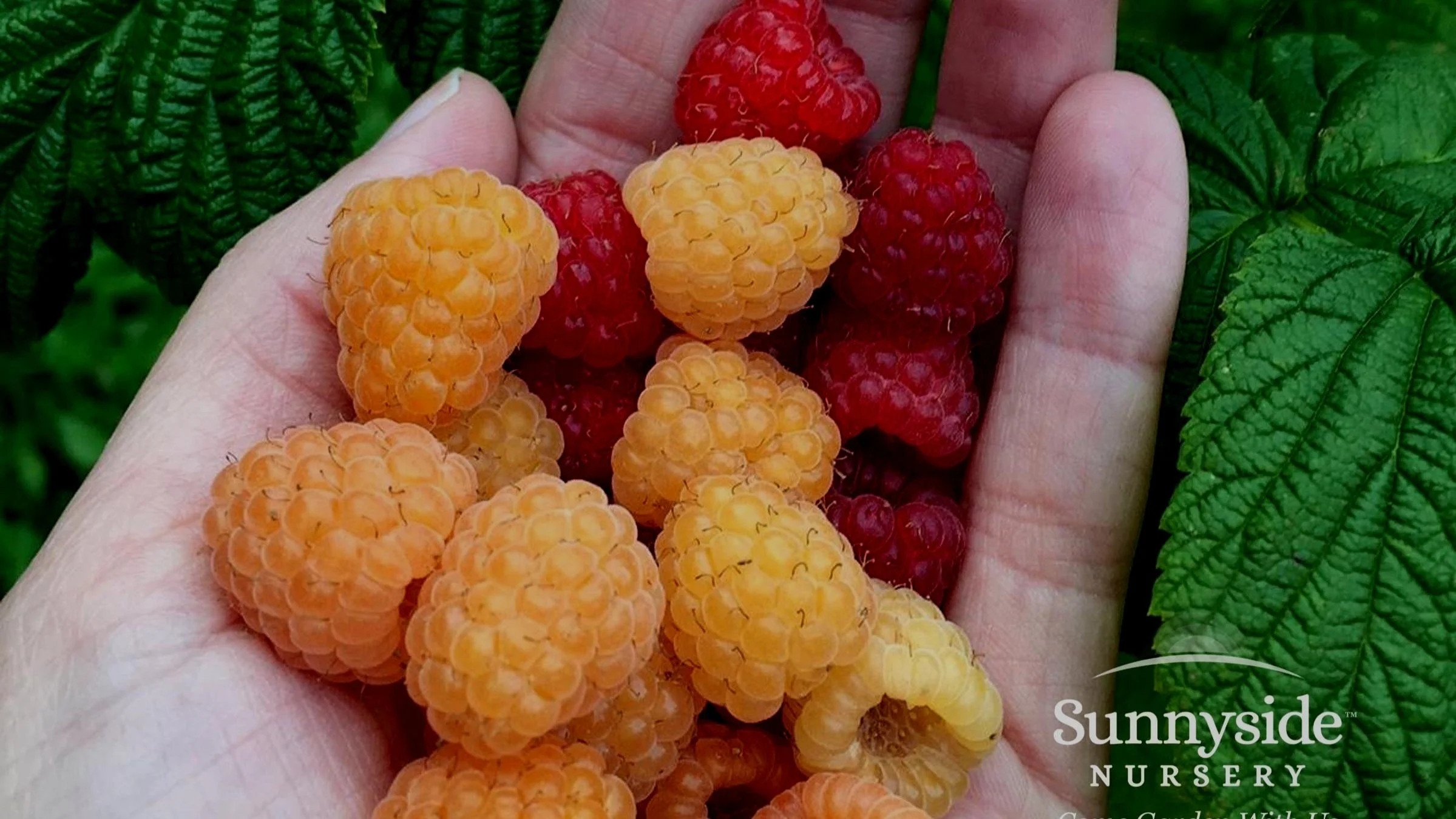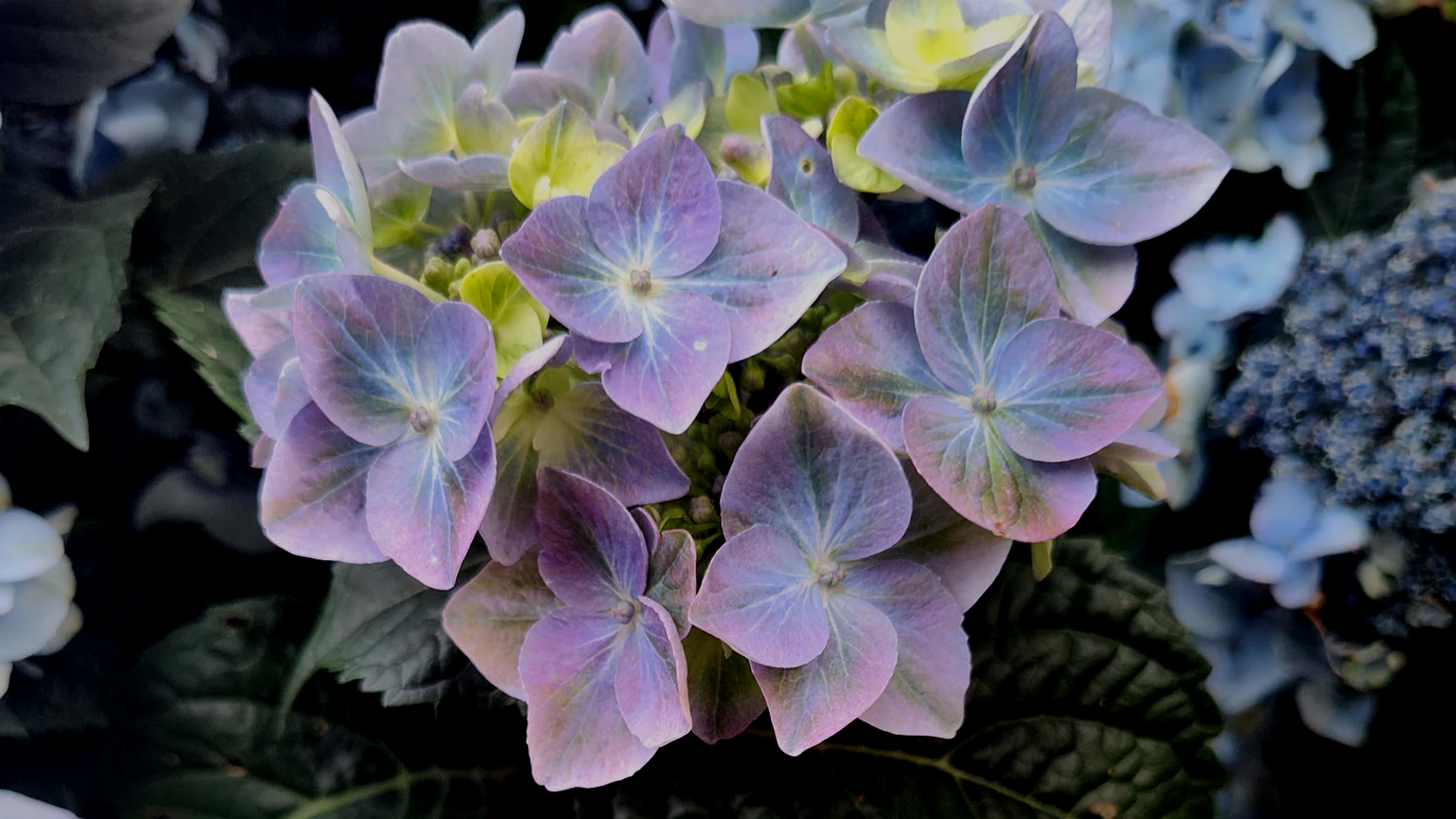As we inch out of the cold and head towards the warmer days of spring, I am feeling the need to talk raspberries this week. As I close my eyes (and start to drool a bit), I can imagine snacking on these fresh tasty treats from the garden. Whether you have existing ones or are looking to add some to your garden, now is a great time to get both older plants maintained and new ones growing. Over the coming weeks the selection of all berries (including raspberries) at local garden centers is at a maximum, allowing you to choose your favorite(s) and get them in the ground now.
If you are adding raspberries to your home garden, begin by setting up simple rows and give them room to grow. This plant is all about the root system, as plants will spread rapidly and sucker profusely. Some gardeners try to contain them in raised beds or use edging around rows to tame them. This may help occasionally, but honestly a sharp shovel (like my favorite “The Root Slayer” from Radius Tools) may be needed to edge the rows this time of year. If you try the edging route, go with a deeper bamboo style barrier – something that can be buried at least 18-inches into the ground. For plant support, I still like the simple “T” post - about four-feet out of the ground, connected by sturdy wire on each side of the row. This with allow you to train/support your canes as they arch over the wire and make picking time much easier.
As I said above, raspberries are all about the root system, which means drainage, drainage, and more drainage is essential. Most problems I see with establishing raspberries successfully goes back to conditions that are too wet, especially over the winter. These are simply not plants to grow in hardpan or clay, period. Loamy soil is ideal, with copious amounts of compost mixed in. Every season they should be fed with an organic Fruit/Berry fertilizer in March, and once again in early June. I would also recommend mulching rows lightly each March (over the fertilizer) with more compost to continue to build healthy, well-draining soil.
The first (and frankly major) choice with raspberries is what variety to cultivate, and more specifically the choice between what we call “June-bearing” and “ever-bearing.” Think of it this way… would you rather pick one large crop to make preserves and/or freeze, or would you like to spread your crop out over two pickings, typically June and then again later summer into early fall? If you have existing plants, think of when you pick and you should be able to confirm which type(s) you have growing. All raspberries are self-fertile, so no need to worry about cross pollination.
June-bearing: If you recall our ongoing pruning discussions from the past three weeks, these raspberries produce only on old wood. Canes that grew and arched last year will bloom and produce this season. What does that mean? It means don’t walk out and cut all of your canes back or there will be minimal snacks for you this season! Your existing rows should be thinned out a bit this time of year, accomplished by cutting out some of the oldest canes at ground level. This encourages fresh suckers off the root system, essentially replacing those canes this season and producing more berries down the road. Longer arching canes can be headed back a bit to control height, especially if they are making your rows tough to navigate and pick.
Ever-bearing: These raspberries produce June berries off of the old wood like above, but also add production later in the season on new wood (current season’s growth) for a second crop. With existing plants, the same pruning principles apply – removing maybe one out of three older canes in crowded rows will really help. It is all about provoking that root system to continue to sucker and produce fresh canes for the future. The biggest difference with this type is that you could cut your plant back severely now, sacrificing the early crop, but after new wood grows this season you would still get some berries later in summer into fall.
In all honesty, I have personally never met a raspberry I did not like, and there certainly are plenty of good options for us to grow locally. For ever-bearing options, superior choices include ‘Indian Summer’, ‘Heritage’, ‘Coho’, and ‘Crimson Night.’ For June-bearing varieties, useful options include ‘Tulameen’, ‘Meeker’, ‘Canby Red’ (which is also almost thornless!), and ‘Willamette’ (still the most widely grown raspberry in the PNW after 50+ years). Other options worth mentioning include ‘Fall Gold’, a super sweet later summer/fall producer that really is golden yellow. ‘Raspberry Shortcake’ is very different, a thornless dwarf variety that stays under 3 feet tall and produces tasty berries in June. Imagine that, no blood loss when picking your raspberries! This one can even be grown in containers easily, but remember what I said about the roots… A large pot will help them thrive, but that pot will need to be divided and replanted every few years.
Like with all edibles, be sure to go green, utilizing organic fertilizers and using natural products when dealing with insects or diseases. As I mentioned above, almost all of the “disease” issues come from either poor drainage or poor air circulation from overcrowding. Proper spacing of rows and removing old canes helps immensely. Using a good dormant fungicide spray (like ‘Liqui-Cop’) before bud break will help start you off clean, especially if you had issues the previous season. During the growing season the main issue I see with mine (and hear from patrons) involve various fruit flies – devilish little gnats that lay their eggs in the berries. Little maggots eventually emerge when almost ripe, making them most inedible. Hanging a natural trap in your row can really make a difference combating these pests in the garden.
I encourage all gardeners to either start or continue to grow their own edibles, as most berries, including raspberries, are easy to cultivate in our region. Be sure to stop into your local garden center to speak with a Certified Professional Horticulturist and let them help you get started the right way, or help correct any issues you may be having with your existing plants. Strap on the body armor, thick gloves, and get your pruning done now. Extend your existing rows or start some new ones, and you will be snacking on some tasty treats this summer. Now I am truly hungry…
Remember, leaves up, roots down…



